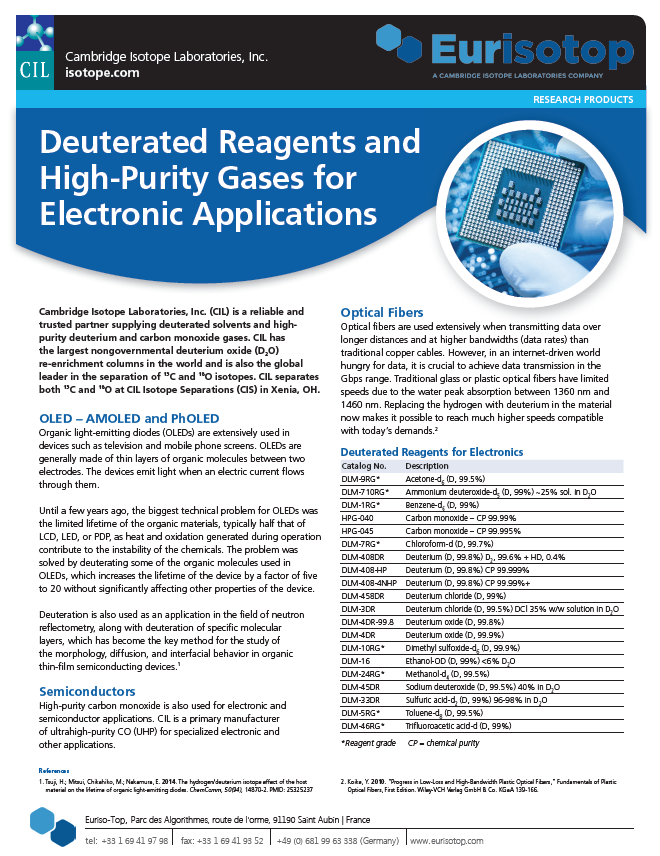Fiber Optics
Optical fibers are used extensively when transmitting data over longer distances and at higher bandwidths (data rates) than traditional copper cables. However, in an internet-driven world hungry for data, it is crucial to achieve data transmission in the Gbps range. Traditional glass or plastic optical fibers have limited speeds due to the water peak absorption between 1360 nm and 1460 nm. Replacing the hydrogen with deuterium oxide in the material now makes it possible to reach much higher speeds compatible with today's demands.
Deuterated Reagents for Electronics
| Catalog Number | Description |
|
Acetone-d6 (D, 99.5%) ~25% sol. in D2O |
|
|
Benzene-d6 (D, 99%) |
|
|
Carbon monoxide – CP 99.99% |
|
|
Carbon monoxide – CP 99.995% |
|
|
Chloroform-d (D, 99.7%) |
|
|
Deuterium (D, 99.8%) (D2, 99.6% + HD, 0.4%) |
|
|
Deuterium (D, 99.8%) CP 99.999% |
|
|
Deuterium (D, 99.8%) CP 99.99%+ |
|
|
Deuterium chloride (D, 99%) |
|
|
Deuterium chloride (D, 99.5%) DCl 35% w/w solution in D2O |
|
|
Deuterium oxide (D, 99.8%) |
|
|
Deuterium oxide (D, 99.9%) |
|
|
Dimethyl sulfoxide-d6 (D, 99.9%) |
|
|
Methanol-d4 (D, 99.5%) |
|
|
Sodium deuteroxide (D, 99.5%) 40% in D2O |
|
|
Sulfuric acid-d2 (D, 99%) 96-98% in D2O |
|
|
D005* |
Toluene-d8 (D, 99.5%) |
|
Trifluoroacetic acid-d (D, 99%) |
References
Koike, Y. 2010. "Progress in Low-Loss and High-Bandwidth Plastic Optical Fibers", Fundamentals of Plastic Optical Fibers, First Edition. Wiley-VCH Verlag GmbH & Co. KGaA 139-166. abstract
Chang, K. 2005. The Importance of Minimizing Hydrogen Aging Losses and Alkali Impurities OFS AllWave® Zero Water Peak (ZWP) Fiber. an OFS White Paper


